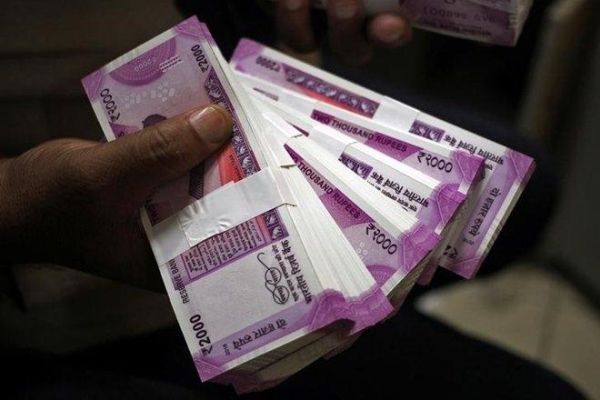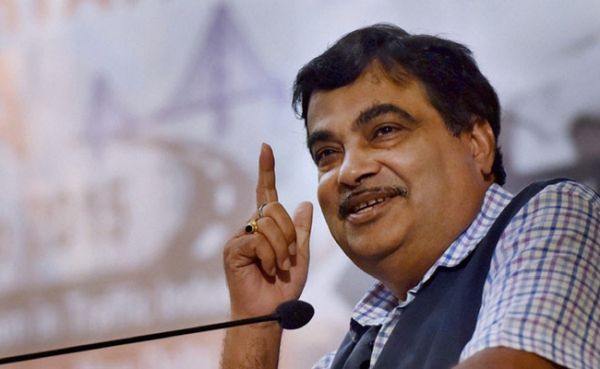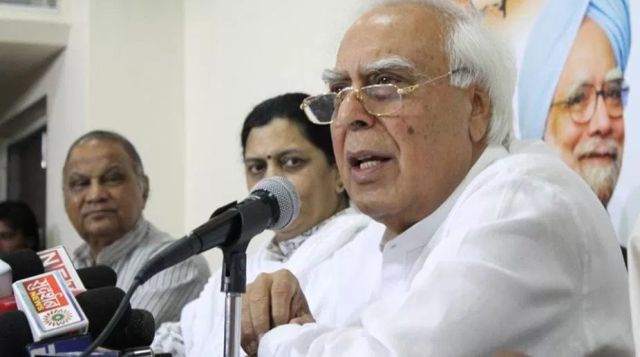
by admin | May 25, 2021 | Books
 (‘Note-Bandi: Demonetisation and India’s Elusive Chase for Black Money’ is an upcoming book from Oxford University Press dedicated to the “memory of Indian citizens who lost their lives due to demonetisation”). Excerpts from a chapter.
(‘Note-Bandi: Demonetisation and India’s Elusive Chase for Black Money’ is an upcoming book from Oxford University Press dedicated to the “memory of Indian citizens who lost their lives due to demonetisation”). Excerpts from a chapter.
By R. Ramakumar,
The litmus test for the success of any demonetisation is the amount of cash that does not return to the banking system. For long, economists and observers were intrigued by the refusal of the RBI to share data on SBNs (Specified Bank Notes) returned to banks after December 10, 2016.
Information on SBNs returned was important because any amount not returned to the banking system was supposed to be ‘black money’, which could be ‘extinguished’ by the RBI… Consequently, the RBI could pass over an equivalent amount to the government, which in turn could spend it for welfare purposes.
The government’s expectations were shared by the Attorney-General of India, Mukul Rohatgi, with the Supreme Court. According to Rohatgi, the government did not expect more than Rs 12 lakh crore to be returned to the banks, which implied that about Rs 3 lakh crore worth of ‘black money’ was to be extinguished and passed over to the government.
As demonetisation proceeded, these hopes stood belied. To begin with, (RBI Governor Urjit) Patel was forced to clarify on December 7, 2016, that “the withdrawal of legal tender characteristic status does not extinguish any of the RBI balance sheets … They are still the liability of the RBI”.
On December 8, Revenue Secretary Hasmukh Adhia told journalists that “the expectation is that the entire money which is in circulation has to come to the banking channel”. In other words, the pace at which SBNs were being returned to the banking system had convinced the government that there would be no currency left to extinguish. By December 10, Rs 12.44 lakh crore worth SBNs had already returned to the banking system.
The government staunchly refused to share any figure on SBNs returned after December 10. Instead, it attempted to obfuscate facts and confuse the public with convoluted stories of ‘double counting’. On December 15, (Economic Affairs Secretary Shaktikanta) Das told the media that data on SBNs returned were being withheld because the RBI suspected ‘double counting’ of currency notes.
Das’ statement was soon shown to be wrong.
There were two ways in which returned SBNs could be counted. One, through the simple addition of the cash position of individual banks with respect to the SBNs returned. There could be double-counting here, as banks without currency chests may have deposited cash with banks that had currency chests.
Two, directly from the currency chests, in which case there was no scope for double-counting. (Deputy Governor of RBI Usha) Thorat, in an interview, pointed out that “there is no question of double counting… RBI only looks at the currency chest data”.
In an interview with the Economic Times, Rajnish Kumar, the Managing Director of the SBI, further clarified this in no uncertain terms: …currency chest position is the correct position, there cannot be any flaw in that … double counting can only happen if the individual banks and post offices are reporting the deposit position … but [in] currency chest reporting which is done every day and which is an automated process, the possibility of any discrepancy does not exist … If the Reserve Bank has given the number based on the currency chest position, then there should be no discrepancy. But if the data is given on the basis of daily reports of deposits being given by the bank, then there is a possibility of some double counting.
In its regular media briefings, the RBI was indeed providing SBN data from currency chests and not by adding the cash positions of individual banks. The RBI’s Deputy Governor R. Gandhi told the media on December 13, 2016, that “specified bank notes of Rs 500 and Rs 1,000 returned to the RBI and currency chests amounted to Rs 12.44 lakh crore as on December 10, 2016 “.
Yet, the RBI was to state on January 5, 2017, that “figures [on SBN] would need to be reconciled with the physical cash balances to eliminate accounting errors/possible double counts”. The effort, clearly, was to hide.
It was only in August 2017 that the RBI, ultimately, released the final figures of the SBNs returned. According to the RBI’s Annual Report for 2016-17, out of the Rs 15.44 lakh crore worth of currency in circulation as on November 8, 2016, Rs 15.3 lakh crore had returned to the banking system as on June 30, 2017. In other words, 98.96 per cent of the SBNs was back in the banking system and only 1.04 per cent of the SBNs remained outside.
The verdict was finally out: As most critics predicted, demonetisation had failed to extinguish any amount of money that could be alleged as ‘black’.
(R. Ramakumar is Dean, Centre for Study of Developing Economies, School of Development Studies, Tata Institute of Social Sciences, Mumbai. He can be reached at ramakumarr@gmail.com)
—IANS

by admin | May 25, 2021 | Banking, Corporate, Corporate finance, Corporate Governance, Economy, News, Politics
 (Note Ban Series)
(Note Ban Series)
By Aparajita Gupta,
New Delhi : When Raghuram Rajan, former governor of the Reserve Bank of India (RBI), cautioned the government against demonetisation, saying short-term economic costs would outweigh long-term benefits, he was not trying to be prophetic. But a year after Prime Minister Narendra Modi made that fateful announcement in a nationwide broadcast on the evening of November 8, it would seem Rajan’s words had actually become so.
As economists and analysts, corporate honchos and statisticians struggle to gauge the beneficial impact of demonetisation, many of the objectives claimed by the government have fallen by the wayside. New claims and afterthoughts on the note ban by senior politicians in power have remained unconvincing. Demonetisation has raised more questions than it has answered.
The Prime Minister, in banning 1,000 and 500-rupee notes — or 86 per cent of total currency in circulation — had indicated that the decision would help remove black money from the system, rein in terrorism and take fake currency out of circulation. Have these objectives been met?
“Demonetisation was an utter failure. Theoretically it was known it cannot be successful. It could not remove black money, but in turn it has damaged the white economy and growth,” Arun Kumar, former professor of economics at the Jawaharlal Nehru University (JNU) told IANS.
The benefits of the decision are yet to percolate to the economy, but the disruption as well as pain that it caused to hundreds of millions was very real, whose lingering effects are seen to this day and, which, at that time, had shaken the country to its core, touching nearly every citizen and visitor.
The overnight serpentine queues for weeks in front of banks, the loss of over a hundred lives in the effort to withdraw one’s own money or change it, and the desperate desire to ensure that cash in hand did not turn to ash took its toll across the country. Was it worth it?
“The government made the elementary mistake of believing that black money is kept in cash. Black wealth can be transacted by non-cash means as well,” said Kumar, who is now Chair-Professor with the Institute of Social Sciences. “Only three per cent of Indians generate substantial black money. But for this, the other 97 per cent had to face the consequences of demonetisation.”
After months of vacillating, and being less than honest with citizens, RBI data in August 2017 said that 99 per cent of the banned currency in high denomination notes had returned to the banking system — Rs 15.28 lakh crore out of the Rs 15.44 lakh crore in circulation on November 8, 2016. The calculation does not take into account the money changed by people in Nepal, where it’s legal tender, or old notes held by many non-resident Indians who could not exchange it within the deadline.
“Indian demonetisation was remarkable, because unlike many countries that faced major economic and political problems after even less drastic measures, this passed off peacefully as most Indians accepted the (wrong) argument that this would end corruption,” Jayati Ghosh, Economics Professor at JNU, told IANS.
“The initial reasons the government had advanced for this move, of reducing terrorism and eliminating both black money and corruption, were rapidly abandoned for other supposed goals, which are also yet to be met. There was no planning before unleashing such a big decision,” she added.
The difficulty in making a cost-benefit analysis is that the move was not purely economic, given the fact that the currency issuer — the RBI — had no role in the decision, as testified by Rajan.
Demonetisation comes across more as a measure of political economy which may appear, on the face of it, to have paid immediate political dividend to the Prime Minister and his party in the Uttar Pradesh elections this year. But the medium-to long-term picture would take a while to clear up, though short-term impact has already taken its toll on growth.
At the end of May, the Central Statistics Office announced that the GDP during the fourth quarter ending in March this year, fell sharply to 6.1 per cent from seven per cent in the previous quarter, while growth for the year as a whole was also expected to decline correspondingly. India’s GDP during the past fiscal grew at 7.1 per cent — at a rate lower than the eight per cent achieved in 2015-16. In terms of gross value added, which excludes taxes but includes subsidies, the growth came in even lower at 5.6 percent over 2015-16.
“Demonetisation is a textbook example of what happens when you remove liquidity that is the basis of transactions. The immediate result was that people didn’t have money even for small transactions. This had a strong negative multiplier effect, most evident in the informal sector,” Ghosh said.
“Cash is the means of transaction in the unorganised sector, which contributes 45 per cent to the GDP. The unorganised sector got hit by 60-80 per cent,” Kumar said, adding that the country went through a negative rate of growth in November-December 2016.
In October, the International Monetary Fund said in its latest World Economic Outlook that India’s economic growth for 2017 and 2018 would be slower than earlier projections. The report cited the “lingering impact” of demonetisation and the Goods and Services Tax (GST) for the expected slowdown, projecting a growth of 6.7 per cent in 2017 and 7.4 per cent in 2018 — 0.5 and 0.3 percentage points less, respectively, than earlier projections.
Ghosh said that the steps on demonetisation, taken together, “generated a perfect recipe for slowdown in the economy. In fact the slowdown is likely to be much sharper than estimated because the quick GDP estimates are based on formal economic activity, and the adverse impact on informal activities have not really been taken into account”.
Ranen Banerjee, Partner & Leader, Public Finance and Economics, at PricewaterhouseCoopers (PwC) feels the country was already cooling down when the note ban came in, and it would take some time to evaluate its impact on the macro economy. “About three to four quarters prior to demonetisation growth rates were already on a sliding path. It could well be that the economy was cooling down and the trend has continued. Attributing the slowdown solely on demonetisation is not possible as we do not have sufficient data points,” Banerjee told IANS.
Economist Dipankar Dasgupta, former professor of economics at the Indian Statistical Institute, said that although GDP in India is not calculated in a very comprehensive manner, the trend growth rate continued to be “pretty robust”. However, despite the claim by the government of ending corruption through demonetisation, “day-to-day bribes are still being taken through cash”, Dasgupta told IANS.
The objectives of dealing a blow to militancy and curbing fake money too seems not to have been met, as can be seen in Jammu and Kashmir, where, ironically, more incidents of militancy have been seen after demonetisation. “Logistics like shelter, passage and cash are mostly routed through over-ground workers and sympathisers of militants and those who could arrange high value notes in the previous system are doing so at present as well”, a senior intelligence officer told IANS in Srinagar on condition of anonymity.
Similarly, about fake currency, officials said the notes carried by militants from across the border were sophisticated copies and those who made them earlier could easily make fakes of the new currencies.
Perhaps there has been some beneficial fallout on the digital economy. Industry stakeholders feel that though the note-ban drive gave the necessary impetus to citizens to start adopting online payment platforms, a lot needs to be done by both the government and the industry to make it a success.
But was the country-wide upheaval worth it to make people adopt more digital transactions? No jury would need to deliberate for long on such a question.
(Aparajita Gupta can be contacted at aparajita.g@ians.in)
—IANS

by admin | May 25, 2021 | Business, Economy, Large Enterprise, Markets, Medium Enterprise, News, SMEs
 (Note Ban Series)
(Note Ban Series)
By Nishant Arora,
New Delhi : The first three quarters of 2016 were going just great and smartphone players had raked in super profits right up to Diwali — then demonetisation caught them by surprise, as it did others.
The note ban hit manufacturers across the spectrum — especially domestic handset makers who primarily rely on cash sales in smaller cities and towns.
The subsequent cash crunch resulted in smartphone sales falling by 30.5 per cent (month-on-month) in November over the October festive season.
According to global market research firm International Data Corporation (IDC), Indian vendors were affected the most — with a drop of 37.2 per cent in November — as compared to Chinese players with a 26.5 per cent drop and global vendors with 30.5 per cent drop over the previous month.
When contacted by IANS, Indian vendors Micromax and Intex declined to comment.
“Demonetisation impacted the smartphone market at almost all levels, including the customer demand and stock movement in the distribution channels,” said Upasana Joshi, Senior Market Analyst, IDC India.
In the fourth quarter (Q4) of 2016, smartphone shipments clocked 25.8 million units — registering similar volume as that of 2015 but declining sharply by 20.3 per cent over the previous quarter owing to demonetisation, which led to relatively lower consumer sales in November and December.
According to the data provided by CyberMedia Research (CMR) to IANS, the smartphone shipment to India was 10 million units in October last year which shrank to 9.2 million units in November and then, slightly improved to 9.6 million units in December.
The slowdown was seen across all cities. There was a huge drop in inquiries and significantly reduced footfall at retail shops. To counter this, handset retailers started offering zero down payment options to improve sales.
To overcome the impact, smartphone players with huge online presence started offering EMI and easy payment options to keep the sales going.
Amid all this, China-based vendors’ market share improved sequentially owing to their high decibel marketing, increased credit line to distributors and efficient channel management.
The sales, however, picked up in 2017 and smartphone players heaved a sign of relief as the cash flow got better.
“In the first quarter of this year, the smartphone shipment was 26.5 million units while in the second quarter, it was 28.4 million units,” Prabhu Ram, General Manager, Industry Intelligence Group (IIG) at CMR, told IANS.
Local brands like Micromax and Lava grew 41 per cent and 24 per cent (QoQ) in the smartphone segment in the third quarter this year, respectively, recovering from their all-time low during demonetisation last year.
Global vendors, led by Samsung, were able to withstand the aggressive Chinese players post-demonetisation owing to their good distributor coverage and penetration in the Indian market.
“The overall industry sentiments were pulled down after note ban, having an impact on smartphones as well. People had tightened their fists and spending was at its lowest ebb,” Faisal Kawoosa, Principal Analyst, Telecom and ESDM, CyberMedia Research (CMR), told IANS.
The industry proactively adjusted the smartphone shipment, scaled down advertising and marketing to the lowest possible levels and resorted to a “wait and watch” policy.
“As soon as the market momentum regained, they flooded the market with new offerings, advertising, marketing as well as promotions that synced up very well with the festive season. And thus we saw a strong comeback,” Kawoosa added.
But the impact of demonetisation will be felt when 2017 comes to a close.
According to the market research firm Gartner, there will be a two per cent drop in the Indian government’s IT spending this year owing to demonetisation and a drop in industrial production.
The government is forecast to spend $7.8 billion on IT in 2017 — a 7.5 percent increase from 2016. This is, however, down from Gartner’s projection of 9.5 percent growth this year.
“The two percent revision in our outlook is primarily due to the effects of demonetisation and a drop in industrial production,” Moutusi Sau, principal research analyst at Gartner, said in a statement recently.
(Nishant Arora can be contacted at nishant.a@ians.in)
—IANS

by admin | May 25, 2021 | Business, Economy, Large Enterprise, News, Politics

Nitin Gadkari
New Delhi : With logistics cost in India alarmingly high, the government is working towards lowering it by a third by developing coastal shipping and inland waterways as alternative modes of transport, Union Shipping Minister Nitin Gadkari said on Saturday.
In his address at “World Food India 2017” here, he said the logistics cost in India was as high as 18 per cent compared to China where it was between 8 and 10 per cent.
“We are trying to bring this cost down to around 12 per cent which would make Indian goods more competitive in the international market,” Gadkari said, adding that the government was prioritising coastal transport and inland waterways compared to road and rail mode as costs were significantly lower for the former.
“For every Rs 10 of transportation cost by road, it is Rs 6 for railways and only Rs 1 for waterways. That means you would be able to transport goods spending only 10 per cent of the current cost,” said Gadkari, who is also the Road Transport and Highways Minister.
“There are 111 rivers which we have decided to develop as inland waterways. Out of these, work has already started on 10 rivers,” he said. “These waterways will significantly reduce logistics cost.”
Even as the government was focusing on developing waterways, work was simultaneously being done at a fast pace to bring down logistics cost on roads as well, the minister said.
“We are going for electronic toll collection. Currently, Delhi to Mumbai takes 28 hours but soon, it will take only 18 hours because we are abolishing all state barriers. Now we will have e-toll collection and no one will be stopped for paying the toll tax, which will be charged automatically.
“This will lead to saving of 8-10 hours between Delhi and Mumbai,” Gadkari said.
“Our focus is also on logistics parks. We have already acquired land for 32 such parks and all major cities will have them,” he said.
Gadkari added that all logistics parks would be located outside the city where big trucks would arrive with goods, after which smaller vehicles would take those goods to different parts of the city based on requirement.
He said in the road sector alone, his target was to bring in investment worth Rs 25 lakh-crore during his tenure.
“We have already signed contracts worth over Rs 6 lakh-crore in road sector. Under Bharatmala project, we are expecting Rs 8-lakh-crore investment.
“I am confident that in two years, we will meet that target,” Gadkari said.
—IANS

by admin | May 25, 2021 | Business, Corporate, Corporate Reports, Economy, Large Enterprise, Markets, News, Politics

Kapil Sibal
New Delhi : The Congress on Saturday slammed Prime Minister Narendra Modi for “patting himself in the back” over the World Bank report on India’s ease of doing business, saying it was only for the “creamy layer of businesses” and that the Prime Minister was “not well-informed about its facts”.
The party said that Prime Minister Modi and Finance Minister Arun Jaitley should also hold a press conference on India’s slide in the global hunger index.
Prime Minister Modi on Saturday attacked the Congress for questioning the World Bank Report on ease of doing business in India and said with GST and other reforms, its report next year would show further improvement in ranking.
“I don’t know whether the Prime Minister is informed about all the facts or not. I don’t think he is aware of the concept of ease of doing business.
“Prior to 2015, there was only one city in every country that was taken into account and that was Mumbai (for the World Bank Report). Now, in 2015, they changed it to two cities. So, Mumbai and Delhi are the two cities for business in India,” said Congress leader Kapil Sibal.
“The businesses don’t take place only in these two cities of the country. The PM has forgotten that there are crores who do small businesses in other cities of the country. Is the PM thinking about them – the informal sector, small traders and factories,” he added.
Sibal said: “He is the Prime Minister of the country and all the business communities, and not just a handful of them. This is called creamy layer of businesses.
“He is not the Prime Minister of the creamy layer of businesses who are located at the top end of the pyramid in Delhi and Mumbai,” he added.
Sibal said the two factors taken into consideration for the report were e-filing, which he said was started by the UPA government, and Insolvency Act which was also conceived by the Congress-led UPA.
“Now the World Bank does not consider the impact of all this. So, I do not know why the Prime Minister is patting himself on the back. Does he realise that our Health Index has gone down from 87 to 108. Why does not he (Modi) or Finance Minister (Arun Jaitley) do a press conference on that?” Sibal asked.
“The global Hunger Index in India is worse than most countries of the world. Why does the Finance Minister not do a press conference on that?” he asked.
—IANS

 (‘Note-Bandi: Demonetisation and India’s Elusive Chase for Black Money’ is an upcoming book from Oxford University Press dedicated to the “memory of Indian citizens who lost their lives due to demonetisation”). Excerpts from a chapter.
(‘Note-Bandi: Demonetisation and India’s Elusive Chase for Black Money’ is an upcoming book from Oxford University Press dedicated to the “memory of Indian citizens who lost their lives due to demonetisation”). Excerpts from a chapter.



